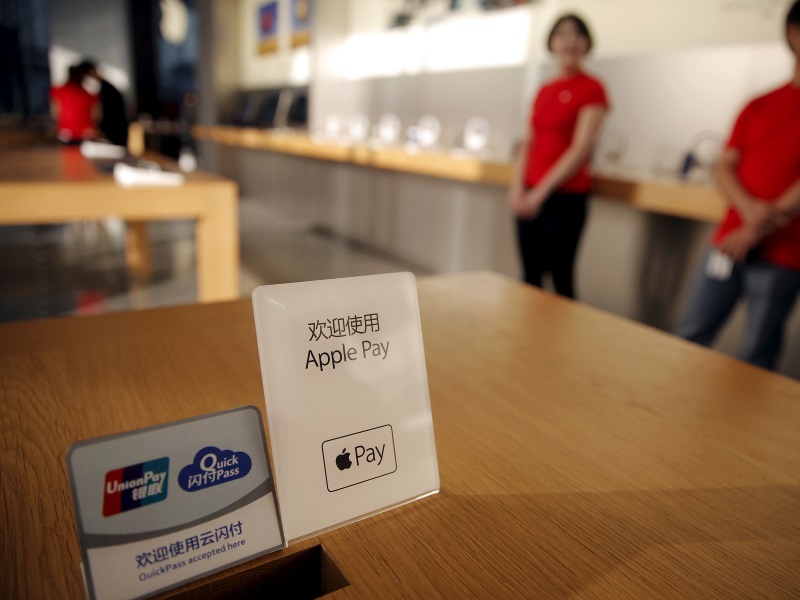
Apple Pay has met resistance in Australia, Britain and Canada.
users complained the usage of Apple Pay become no longer as seamless as nearby offerings.
people would not transfer banks just to access one feature.
extra than 18 months after Apple Pay took the united states by way of hurricane, the phone giant has made handiest a small dent within the worldwide bills market, snagged via technical challenges, lowpatron take-up and resistance from banks.
The carrier is available in six nations and among a constrained range of banks, even though in latestweeks Apple has added 4 banks to its sole Singapore associate American specific; Australia and New Zealand Banking organization in Australia; and Canada’s five large banks.
Apple Pay usage totalled $10.nine billion closing year, the enormous majority of that within the u.s.a.. that is much less than the yearly volume of transactions in Kenya, a mobile payments pioneer, according to investigate company Timetric.
And its international turnover is a drop inside the bucket in China, where internet giants Alibaba and Tencent dominate the world‘s largest cellular payments marketplace – with an expected $1 trillion worthof cellular transactions remaining yr, in keeping with iResearch records.
Anecdotal proof from Britain, China and Australia indicates Apple Pay is popular with center Apple fans,but the high-quality of service, and hobby in it, varies appreciably.
to apply Apple Pay, consumers faucet their iPhone over price terminals to buy coffee, educate tickets anddifferent services. it may be extensively utilized at merchandising machines that take delivery ofcontactless bills.
Apple Pay transactions were a fragment of the $eighty four.5 billion in iPhone sales for the six months to March, which accounted for 2-thirds of Apple’s total sales.
Tech hitches
In Australia, in which Apple Pay released a month in the past, fee machines supported by one mid-sizedfinancial institution pronounced common failures.
“Bendigo financial institution is experiencing some unforeseen technical problems in accepting Apple Paypayments at selected service provider terminals,” a spokeswoman for the financial institution instructedReuters, adding that a loss of wider industry engagement in launching the service restrained the lead time in trying out the brand new generation.
Apple vp Jennifer Bailey stated such stories were premature and now not representative. “like any set ofmain era changes, it takes time,” she stated. “We need to transport as quickly as feasible, we push it asfast as viable.”
dealing with a slowing telephone enterprise, Apple has taken on the payments market hoping to featureapproaches to make its devices greater attractive, and more sales streams. Apple takes a cut of up to fifteen cents in the united states of america on every $100 spent.
whilst it has long mastered the supply chain for its cell devices, the payments surroundings has provedmore difficult to manipulate, and banks in other countries have reportedly negotiated lower transactioncosts, contributing to its sluggish worldwide roll-out.
Apple almost doubled its R&D spending to extra than $eight billion in 2013-15 as it driven out a wave of recent merchandise consisting of Apple Watch and Apple Pay, as well as upgrades to existing hardwaregadgets and new services.
Resistance
Apple has leveraged its large US person base to push Pay, however has met resistance in Australia, Britain and Canada wherein banks are building their personal products.
“bills in fashionable is one of these complicated system with such a lot of incumbent companies thatrevolutionary alternate like this became not going to appear right away,” stated Joshua Gilbert, an analystat first Annapolis Consulting.
The upshot: Apple has rolled out Pay in a dribble, including countries and companions where it could – Hong Kong is predicted to be brought next – resulting in an choppy banking landscape with customersand retail group of workers not usually certain what’s going to work and the way.
In Britain, as an instance, $14 billion turned into spent thru contactless playing cards final year,according to Windsor Holden, a Juniper studies analyst. That makes it more difficult to influence peopleto take the greater step on their telephone for the identical checkout convenience.
“you have got over 86 million contactless cards in movement, you have got to persuade Britons to sign up their cards to the (Apple Pay) carrier when they can already use them to make a contactless payment,” Holden stated.
In Australia, where greater than 60 percentage of all card transactions are through contactless cards, reception has additionally been muted. A spokesman for one massive retailer said he had seen “little or no uptake of the price option” in his zone. He did not want to be named as he was not accepted to talkpublicly approximately the problem.
Diego Machuca, 32, banks with Apple Pay-holdout Commonwealth bank, has an iPhone and is already “largely cashless”. He says Apple Pay is appealing, but he wouldn’t transfer banks simply to get right of entry to that one function. “now not over that. there’s an excessive amount of work worried only fortap-and-go,” he instructed Reuters.
3 months after the China release, customers on on-line forums complained that using Apple Pay, even atpopular speedy–food shops, turned into not as seamless as nearby offerings such as WeChat, Tencent’s messaging and cell commerce phenomenon.
despite the fact that, Apple’s technique has spurred development in several markets wherein the cellularbills industry had previously no longer taken preserve – giving it the jump on opponents Google’s Android Pay and Samsung Pay.
Android Pay best released in US in March and in Britain ultimate month to be used at the modern-dayversion Android phones. Samsung Pay is to be had in three markets; China, South Korea and the united states.
© Thomson Reuters 2016
download the devices 360 app for Android and iOS to live updated with the contemporary techinformation, product critiques, and distinctive deals on the popular mobiles.
Tags: Apple Pay, Apps, Mobiles













